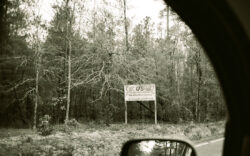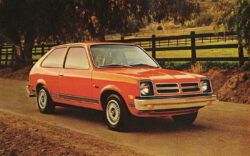Up We Go
When last seen collaborating, Grady Thrasher, Kathy Prescott and Matt DeGenarro were vigorously opposing the bio-terror lab. This time around, they have produced and directed The World’s Smallest Airport, the delightfully charming true story of the Thrasher Brothers’ Aerial Circus, 1945-50. Please immediately do yourself the favor of catching this film Wednesday or Thursday at 5:15 p.m. at Ciné. It only takes just over an hour, so you can stop by after work and still be home for supper.
We caught it at the lavish World Premiere Saturday night and came out fired up by the derring-do and native ingenuity of those flying guys and their descendent who has so skillfully immortalized them. Grady Thrasher is a retired bond lawyer who writes children’s books, and Kathy Prescott is an artist. Matt DeGenarro is obviously an artist with film, and the collaboration among the three is a homegrown tribute to hometown heroes and a demonstration all around of what can be gained if you’re not afraid to just get out there and do it.
Fortunately, they found some old footage of the flying Thrashers and lots of good stills, along with enough newspaper clippings to let you see how breathtaking the Circus was, with some cool animation thrown in where needed, not to mention the lively score that puts a smile on your face.
The flying Thrasher brothers first came to the attention of Flagpole readers when Grady Thrasher walked in last year and contributed the story and photos to the inaugural issue of Slackpole, our reader-written section, getting us off to a classy start. The material was too rich just to languish in our archives and now has been writ large upon the silver screen, where you’ve got to do yourself the favor of seeing it before it leaves.
Conrad Fink
Conrad Fink, who died this week at the age of 80, was a country boy who grew up to become a Marine and then an international reporter, a newspaper executive, a journalism professor and a prolific author. He was no-nonsense and tough and expected his students to measure up—and God knows they tried. I don’t think I’ve ever met one of his students who didn’t swear by him no matter how much they may have sworn at him while trying to write the papers he demanded or prepare to face him in class. Knowing that death could claim Conrad is enough to shake anybody’s denial that it will get us all. Conrad was not shy about promoting himself, with good reason, and he was generous in promoting others. Wherever you encountered him it was hard not to see him in a trenchcoat fighting for a phone in some foggy CBI hamlet to get the word back to his editor that he had been kicked out of Vietnam or that Nehru had died or that the difficulties in acquiring decent Scotch had driven up his expense report. That aura brought an edge to academic journalism and gave his students a closeup look at one who had been there. He is missed.
Like what you just read? Support Flagpole by making a donation today. Every dollar you give helps fund our ongoing mission to provide Athens with quality, independent journalism.










